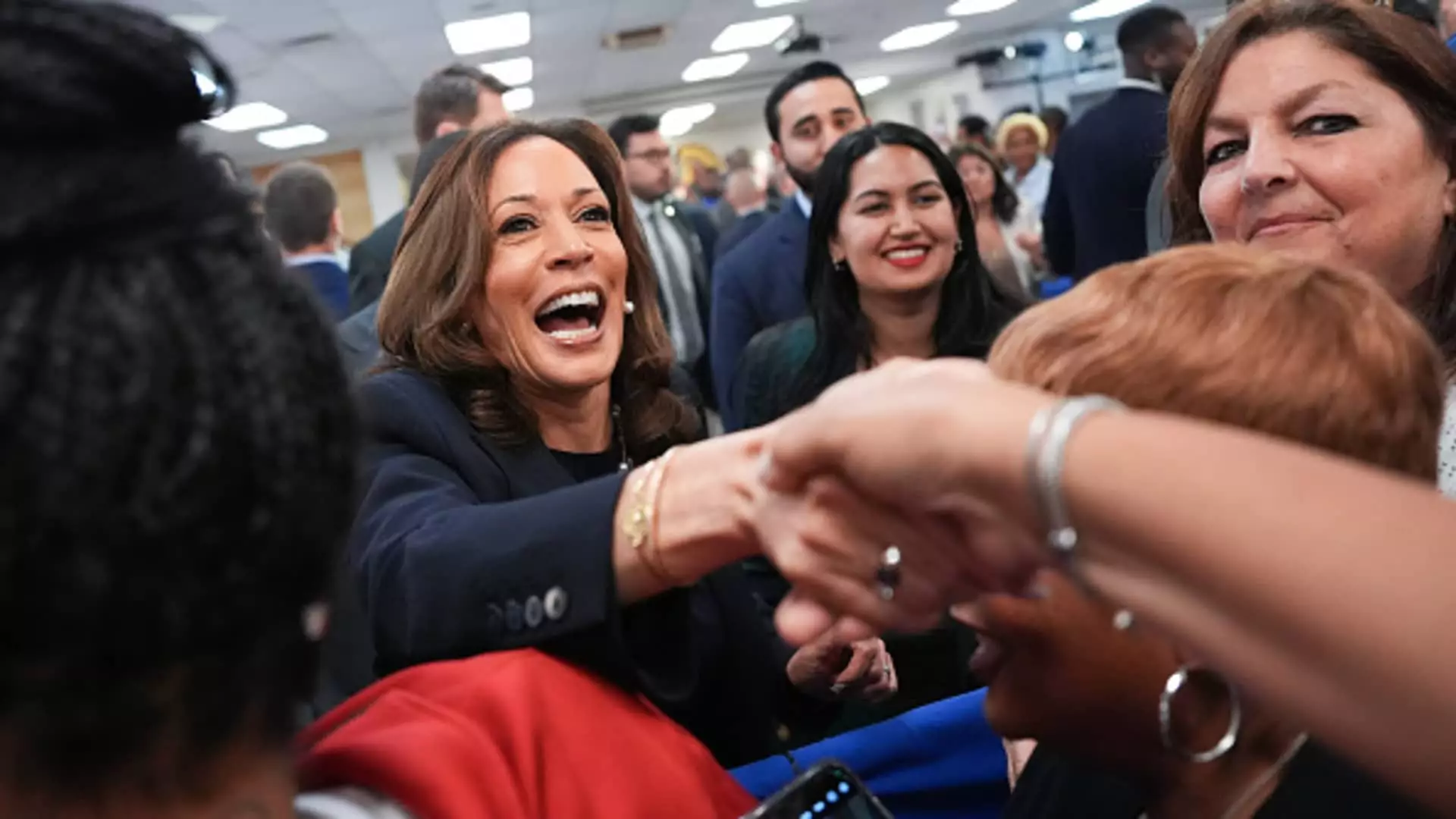In the current political landscape, securing voter attention is paramount. The Harris campaign has made headlines with its announcement of a staggering $370 million investment in advertising across critical battleground states, a strategy intended to solidify its position ahead of the November elections. The breakdown of this substantial investment reveals a focused approach, with $170 million allocated for television advertisements and an impressive $200 million directed towards digital platforms. This two-pronged strategy aims to maximize reach and effectiveness, targeting audiences where they spend most of their time—on-screen and online.
This approach marks a significant evolution in political advertising, diverging from traditional methods that once dominated campaign strategies. By reserving advertising slots well in advance, the Harris campaign aims to capitalize on high-profile viewership events, such as major sports leagues and popular television premieres. Targeting these moments allows the campaign to capture the attention of potential voters in environments characterized by high engagement.
As the dynamics of the race shift, with former President Joe Biden’s withdrawal and endorsement of Harris, the urgency to establish a distinct campaign identity grows. Harris’s team faces the challenge of differentiating her messaging from that of Donald Trump, who continues to maintain a significant presence in the political arena. The competition for narrative control signifies the importance of getting ahead of ad placements to circumvent any potential overshadowing by Trump’s counter-campaign strategies, which can craft a narrative that might prove detrimental to Harris’s goals.
Both campaigns are making high-stakes maneuvers, with Harris’s team adopting an aggressive approach to secure prime advertising slots. The early booking of television spots reflects an understanding of market dynamics—ad costs increase significantly as the election date approaches, making it more economically favorable to act sooner rather than later. Harris’s campaign aims to secure prime-time placements during high-viewership events, but as they do so, the Trump campaign offers a counter-narrative questioning the efficacy of Harris’s spending, framing it as desperation rather than strategy.
One of the most striking components of the Harris advertising strategy is the pronounced emphasis on digital marketing, which accounts for a considerable share of the overall budget. This decision mirrors a broader trend in political campaigning, where digital advertising has become indispensable for reaching a fragmented audience across diverse platforms. Harris’s $30 million investment in digital ads signals a commitment to innovative outreach mechanisms designed to engage voters in a landscape that is increasingly dominated by social media and streaming content.
The Harris campaign’s expenditures in digital media, especially on platforms like Facebook and Google, have outpaced those of competitors. They are on track to become one of the largest digital spenders in contemporary political history, reflecting a strategic pivot that aligns with the evolving media consumption habits of voters. By allocating significant resources toward platforms that engage younger demographics and tech-savvy voters, the campaign seeks to create a more dynamic and responsive communication strategy.
Beyond tactics of securing media placements and capitalizing on high-profile events, there resides a more specific method in Harris’s advertising strategy: targeting moderate audiences. By placing daytime ads on platforms such as Fox News, the campaign aims to reach potential voters who may not traditionally align with Democratic narratives, including supporters of former Republican candidate Nikki Haley. This tactic underscores an understanding of political pragmatism, suggesting that the path to victory could lie in winning over a diversified voter base.
Moreover, the campaign’s ad blitz comes at a critical juncture, following significant party conventions where both parties solidify their messages and platforms. At this stage, voter persuasion becomes increasingly pivotal, particularly in swing states that could tilt the balance of the election. Compared to past campaign spending, Harris’s commitment is spotlighted by stark figures indicating a focused effort—doubling or even quadrupling expenditures in key state markets when measured against previous election cycles.
The Harris campaign’s strategic approach to handling its advertising portfolio illustrates a calculated response to the complex dynamics of the current electoral environment. By investing in key battlegrounds and embracing digital innovation, the campaign is positioning itself as not just a candidate for the presidency, but as a formidable force determined to reshape the political narrative as it approaches November. As both campaigns raise their stakes, the intersection of traditional and modern campaign strategies will likely play a crucial role in determining the outcome of the election. The efficacy of Harris’s tactics may not only influence her campaign’s fortunes but could also redefine how political messaging is crafted in the digital age.


Leave a Reply